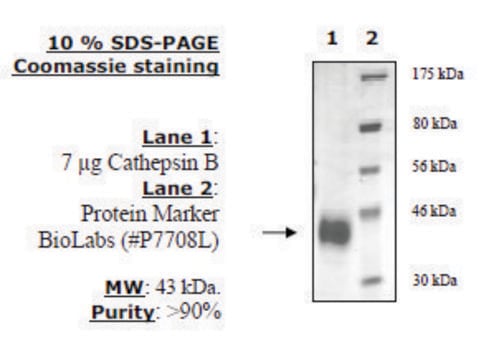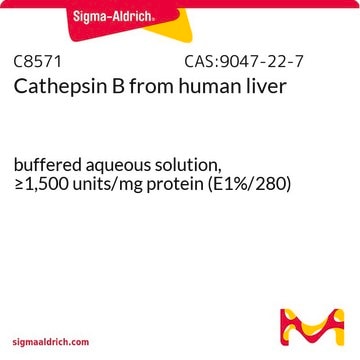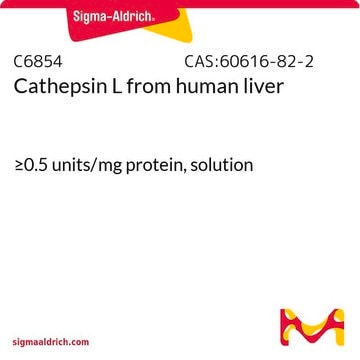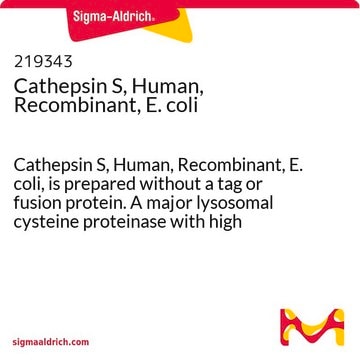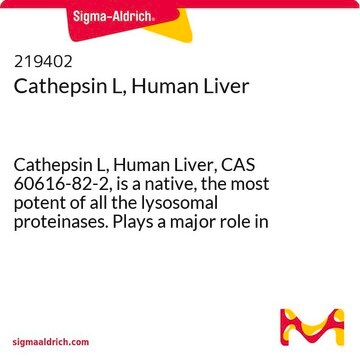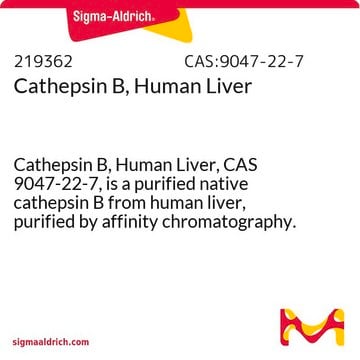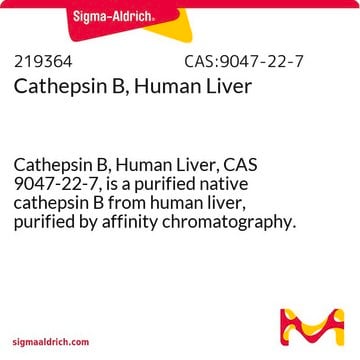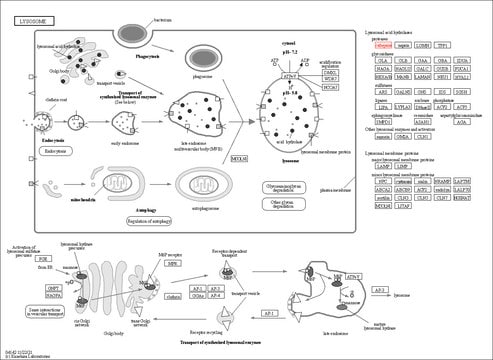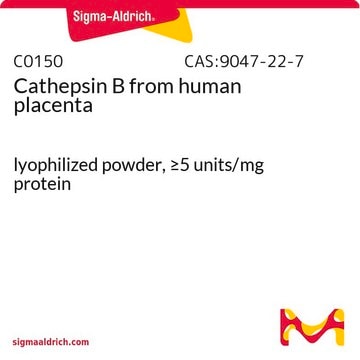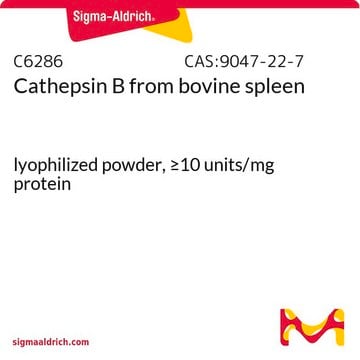SRP0292
Cathepsin S Active human
recombinant, expressed in FreeStyle™ 293-F cells, ≥90% (SDS-PAGE)
Synonyme(s) :
CTSS, MGC3886
About This Item
Produits recommandés
Source biologique
human
Produit recombinant
expressed in FreeStyle™ 293-F cells
Pureté
≥90% (SDS-PAGE)
Forme
aqueous solution
Activité spécifique
≥8100 pmol/min-μg
Poids mol.
37 kDa
Technique(s)
activity assay: suitable
Adéquation
suitable for molecular biology
Numéro d'accès NCBI
Application(s)
life science and biopharma
Conditions d'expédition
dry ice
Température de stockage
−70°C
Informations sur le gène
human ... CTSS(1520)
Description générale
Human cathepsin S (GenBank Accession No. NM_004079.3), CD33 signal peptide (amino acids 1-16) + cathepsin S (amino acids 17-331), with C-terminal HIS tag, MW = 37 kDa, expressed in FreeStyle 293-F cells. Cathepsin S belongs to the cysteine cathepsin protease family. It has limited tissue expression, being associated with antigen-presenting cells localized in lymph and spleen, as well as other immune cells like macrophages. Human cathepsin S is produced from its corresponding CTSS gene on chromosome 1q21 and is synthesized as a pre-proenzyme.
Application
- to assess the pathogenesis of Alzheimer′s disease.
- to investigate the optimization of selectivity of Azepanone-based inhibitors.
- for the immunocytochemical detection of cathepsin-S in mouse samples.
- for incubating mouse brain sections to test the impact of cathepsin-S on perineuronal nets (PNNs) integrity.
Actions biochimiques/physiologiques
Définition de l'unité
Forme physique
Notes préparatoires
Informations légales
Mention d'avertissement
Danger
Mentions de danger
Conseils de prudence
Classification des risques
Eye Irrit. 2 - Repr. 1B - Skin Irrit. 2
Code de la classe de stockage
6.1C - Combustible acute toxic Cat.3 / toxic compounds or compounds which causing chronic effects
Classe de danger pour l'eau (WGK)
WGK 3
Point d'éclair (°F)
Not applicable
Point d'éclair (°C)
Not applicable
Certificats d'analyse (COA)
Recherchez un Certificats d'analyse (COA) en saisissant le numéro de lot du produit. Les numéros de lot figurent sur l'étiquette du produit après les mots "Lot" ou "Batch".
Déjà en possession de ce produit ?
Retrouvez la documentation relative aux produits que vous avez récemment achetés dans la Bibliothèque de documents.
Notre équipe de scientifiques dispose d'une expérience dans tous les secteurs de la recherche, notamment en sciences de la vie, science des matériaux, synthèse chimique, chromatographie, analyse et dans de nombreux autres domaines..
Contacter notre Service technique